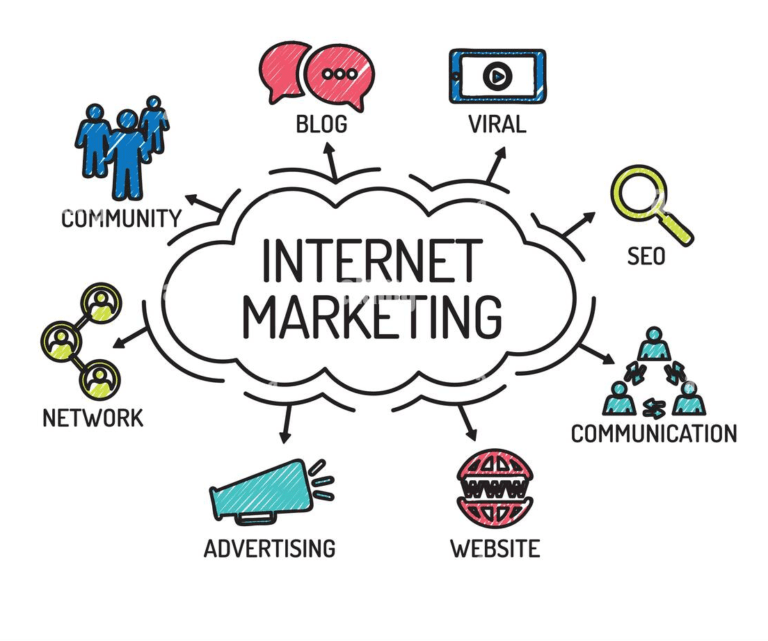Personalization 2.0: How AI is Revolutionizing Email Marketing
Introduction:
One tactic stands out as being especially effective in the constantly changing field of digital marketing personalization. Artificial Intelligence (AI) has brought about a significant transformation in the marketing industry, particularly in email marketing. Personalization 2.0 ushers in a new era in which artificial intelligence (AI) powers highly customized and successful email campaigns, not just as a tool.
The days of generic mass emails filling up inboxes and frequently ending up in the spam folder are long gone. Consumers today have higher expectations; they want value, relevance, and a customized touch. By using data to get a personalized understanding of each recipient and create content that really speaks to them, artificial intelligence (AI) enables marketers to surpass these expectations.
So, how exactly is AI revolutionizing email marketing?

1. Hyper-Personalization:
To generate highly personalized email content, AI algorithms examine enormous volumes of data, including demographics, purchase history, past interactions, and browsing habits. Every component, including product recommendations and subject lines, is customized to the recipient’s tastes and requirements.
AI can automatically create emails showcasing the newest running shoes or accessories, for example, if a customer regularly buys running gear. This increases the chance of engagement and conversion.
Nike, Starbucks, Netflix, Amazon, and Spotify are a few examples. All things considered, hyper-personalization is the way of the future for marketing—it offers extremely relevant and targeted experiences that connect with consumers on a human level.
2. Predictive Analytics:
AI forecasts future behavior in addition to past behavior. Email marketers can predict what goods or content a customer might be interested in next by using predictive analytics. This makes it possible for proactive outreach, guaranteeing that emails are timely, relevant, and personalized.
Predictive analytics in email marketing examples include:
- Product Recommendations: To create customized product recommendations for email campaigns, e-commerce platforms employ predictive analytics to examine the past purchases, browsing habits, and preferences of their customers. For example, Amazon makes product recommendations based on previously purchased and viewed items.
- Content Personalization: Predictive analytics is used by media and content platforms to suggest podcasts, videos, or articles based on user interests and preferences. AI algorithms are used by services like Netflix and Spotify to offer personalized content recommendations in their email newsletters.
- Recovering Abandoned Carts: Shops use predictive analytics to track down customers who leave their shopping carts unattended and follow up with customized email reminders. Personalized product recommendations or exclusive deals are frequently included in these emails to entice customers to finish their purchase.

3. Dynamic Content:
Email templates that are static are no longer in use. Marketers can use AI to create dynamic email content that instantly changes for each recipient. As a result, each email is distinct and features offers or products according to the recipient’s interests and actions at the time of opening.
There are a few examples of dynamic content used in email marketing:
- Personalized Product Suggestions: Based on a customer’s browsing or past purchases, an online retailer will send them an email with personalized product recommendations. For example, if the consumer has previously purchased running shoes, the email might suggest athletic wear or accessories as related products.
- Countdown Timers: When promoting a limited-time vacation package via email, a travel agency includes a countdown timer that shows how much time is left before the offer expires. As a result, recipients feel pressured to plan their travel before the deadline.
- Location-Based Offers: Based on the recipient’s closest restaurant location, a restaurant chain emails subscribers with offers that are specific to a given location. For instance, if the recipient lives close to a specific restaurant, they might get emails advertising sales or other events at that establishment.
4. Automated Optimization:
While valuable, A/B testing takes time. AI makes this process more efficient by automatically evaluating various email components, like subject lines, calls to action, and images, and figuring out the best combination for each recipient group. Email campaigns always operate at their peak thanks to this ongoing optimization.
Examples:
Email marketing automated optimization makes use of automation and machine learning to improve email campaign performance. Examples include subject line testing to find the best-performing subject lines, content personalization for tailored product recommendations, optimal content layout adjustments based on recipient engagement, send time optimization (STO) to schedule emails when recipients are most likely to engage, and segmentation and targeting using predictive analytics to send targeted emails to particular customer segments. By giving their audience more individualized and pertinent content, these automated strategies assist marketers in increasing audience engagement, conversions, and overall campaign effectiveness.
5. Behavioral Triggers:
Email marketing platforms with AI capabilities can send out automated emails in response to particular user actions or occasions, like birthdays, abandoned carts, or subscription renewals. By facilitating prompt and tailored communication, these behavioral triggers cultivate leads and increase conversions.
Examples:
Behavioral triggers in email marketing are automated responses that are triggered by specific actions or behaviors exhibited by recipients. These triggers enable marketers to send timely and personalized emails based on recipient interactions, such as abandoned carts, welcome sign-ups, inactivity, birthdays, browse abandonment, and post-purchase follow-ups. By leveraging behavioral triggers, marketers can enhance engagement, conversions, and customer satisfaction by delivering relevant content tailored to recipient actions and preferences
6. Cross-Channel Integration:
AI makes it easier to integrate various marketing channels seamlessly, enabling a unified and customized consumer experience. Email marketing campaigns can be coordinated with SMS, social media, and other channels to maximize engagement and guarantee consistent messaging.
Examples:
In marketing, cross-channel integration refers to coordinating strategies across multiple channels to offer a consistent customer experience. Email and social media integration, online and offline channels, website and email, push notifications and mobile apps, offline and online advertising, customer support, and loyalty programs are a few examples. Businesses can boost engagement, generate more revenue, and establish a cohesive brand experience by integrating their channels.

The Future of Email Marketing:
Personalization 2.0 is the way of the future for email marketing, not just a trendy term. The efficacy and degree of personalization of email campaigns will increase as AI develops. But it’s crucial to keep in mind that AI is a tool, not a substitute for human ingenuity and cunning. Marketers need to find a middle ground between automation and genuineness, using AI to complement human interaction rather than to replace it.
Conclusion:
In Conclusion, AI is transforming email marketing through the provision of behavioral triggers, automated optimization, dynamic content, hyper-personalization, predictive analytics, and cross-channel integration. Marketers can design email campaigns that captivate recipients by utilizing artificial intelligence (AI), which will ultimately lead to increased engagement, loyalty, and business expansion in the digital era.
FAQs:
1. How does Personalization 2.0 differ from traditional email marketing?
Personalization 2.0 incorporates sophisticated AI-powered techniques that go beyond simple segmentation. While Personalization 2.0 uses artificial intelligence (AI) to deliver hyper-personalized content and dynamic experiences based on real-time data and insights, traditional email marketing frequently uses static content and manual segmentation.
2. How does AI analyze and utilize customer data for personalization?
Numerous customer data elements are analyzed by AI algorithms, such as past interactions, preferences, purchase history, browsing behavior, demographic data, and more. With the use of this information, comprehensive customer profiles may be made, and email content, subject lines, timing, and recommendations can be made specifically for each recipient.
3. What are the benefits of Personalization 2.0 for businesses?
By sending recipients relevant content that speaks to them, personalization 2.0 can increase customer satisfaction, engagement, and conversion rates. Businesses can improve customer relationships, boost ROI, and expedite email marketing by utilizing AI-driven insights and automation.
4. Are there any privacy concerns associated with Personalization 2.0?
Even though personalization has many advantages, companies must put customer privacy and data security first. Marketers should guarantee compliance with pertinent regulations, such as the CCPA and GDPR, and be open and honest about the ways in which customer data is gathered, maintained, and utilized. Privacy concerns can be reduced by putting strong data protection measures in place and getting customers’ express consent.
5. How can businesses get started with Personalization 2.0?
Even though personalization has many advantages, companies must put customer privacy and data security first. Marketers should guarantee compliance with pertinent regulations, such as the CCPA and GDPR, and be open and honest about the ways in which customer data is gathered, maintained, and utilized. Privacy concerns can be reduced by putting strong data protection measures in place and getting customers’ express consent.
6. What are some examples of successful Personalization 2.0 campaigns?
Personalized product recommendations based on prior purchases, dynamic email content catered to individual preferences, triggered emails based on customer actions in real time, and predictive analytics-driven campaigns that anticipate customer needs are all examples of successful Personalization 2.0 campaigns. Effective personalization strategies can be gleaned from case studies and examples from well-known brands.







